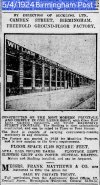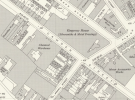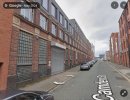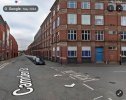-
Welcome to this forum . We are a worldwide group with a common interest in Birmingham and its history. While here, please follow a few simple rules. We ask that you respect other members, thank those who have helped you and please keep your contributions on-topic with the thread.
We do hope you enjoy your visit. BHF Admin Team
You are using an out of date browser. It may not display this or other websites correctly.
You should upgrade or use an alternative browser.
You should upgrade or use an alternative browser.
Suckling and Sons Ltd Camden Street
- Thread starter Vivienne14
- Start date
A Sparks
master brummie
The name on the building looks like William Suckling - they were silversmiths according to this, no mention of munitions.
WILLIAM SUCKLING ENGLISH SILVERSMITH HISTORYFounded in Birmingham by William Suckling in 1895, the company specialized in a large range of quality silver-plated silverware marketed under the trade names BURMESE, REGIS PLATE, KINGSWAY PLATE and PLATINE METAL.
They are still trading
It might not be the same people of course.
WILLIAM SUCKLING ENGLISH SILVERSMITH HISTORYFounded in Birmingham by William Suckling in 1895, the company specialized in a large range of quality silver-plated silverware marketed under the trade names BURMESE, REGIS PLATE, KINGSWAY PLATE and PLATINE METAL.
They are still trading
It might not be the same people of course.
Before WW1 Sucklings are listed as in Albion St, but Kellys shows that the factory was on the corner with Camden /St. . It is reasonable to assume, therefore that the factory is the one marked in red on the 1913 map
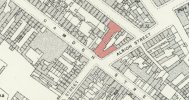
And there is mention in the newspapers of someone who worked at Sucklings in Camden St pre WW1

There is no map available immediate post WW1, but the incomplete 1937 map shows the whole area taken up by a large factory, as does the later 1954 map. It was common in WW1 and WW" for firms to take on different tasks to those in peacetime
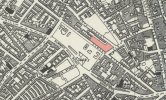
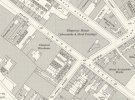
So the building is probably this one


And there is mention in the newspapers of someone who worked at Sucklings in Camden St pre WW1

There is no map available immediate post WW1, but the incomplete 1937 map shows the whole area taken up by a large factory, as does the later 1954 map. It was common in WW1 and WW" for firms to take on different tasks to those in peacetime


So the building is probably this one
Attachments
Thanks all. So as Mike suggests, Sucklings must have moved across to munitions during WW1. I suppose the machinery they had for plateware manufacture would have been put to good use, possibly adapted, for making munitions.
The reason it crossed my mind that it might have once been a Mills factory is because the Mills family once lived in Camden Street. Doesn't mean a connection of course !
Editing thread title to Sucklings.
The reason it crossed my mind that it might have once been a Mills factory is because the Mills family once lived in Camden Street. Doesn't mean a connection of course !
Editing thread title to Sucklings.
Good point. It would mean it was only used for its original purpose for a short while.The quote "surplus to the firm's requirements" does imply it was owned/occupied by some other organisation.
That must mean that Private Davies in post #4 was employed at the Suckling building on Albion Street (as per Mike's map #4). Perhaps Sucklings, post-1918/WW1, expanded into the Camden Street 'modern' building which by 1924 they advertised for sale.
That must mean that Private Davies in post #4 was employed at the Suckling building on Albion Street (as per Mike's map #4). Perhaps Sucklings, post-1918/WW1, expanded into the Camden Street 'modern' building which by 1924 they advertised for sale.
Last edited:
Sucklings advertising as being at Kingsway House, Albion Street in 1918. The address in Albion Street was #35. They were no longer in business by 1965.
During the war they specialised in auto products and pressings and continued to do so afterwards. Maybe this was the motive for taking over the Camden Street 'modern' building.
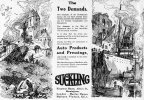
During the war they specialised in auto products and pressings and continued to do so afterwards. Maybe this was the motive for taking over the Camden Street 'modern' building.

Last edited:
superdad3
master brummie
This is another advert for Wm Suckling & Sons. similar to that in post 8 above. How odd that a well known silversmith made auto parts etc during WW1. and intended to continue after the war......
This is AI note from Google:
During World War I, William Suckling & Sons, a Birmingham-based silversmith and manufacturer, produced aeronautical stampings and repetition work. This indicates their factory was involved in supplying parts for the war effort, specifically for aircraft. The company was known for its silver-plated holloware, including items marketed under names like Burmese Plate, Regis Plate, Kingsway Plate, and Platine Metal. The firm operated from 1895 to 1965.
Just confirms how flexible Birmingham metal workers were and how they could turn their hand to much else.
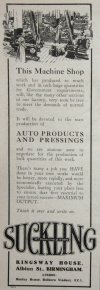
This is AI note from Google:
During World War I, William Suckling & Sons, a Birmingham-based silversmith and manufacturer, produced aeronautical stampings and repetition work. This indicates their factory was involved in supplying parts for the war effort, specifically for aircraft. The company was known for its silver-plated holloware, including items marketed under names like Burmese Plate, Regis Plate, Kingsway Plate, and Platine Metal. The firm operated from 1895 to 1965.
Just confirms how flexible Birmingham metal workers were and how they could turn their hand to much else.


